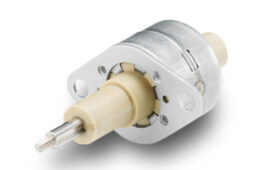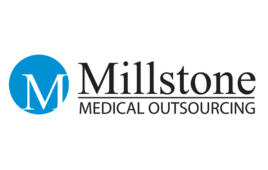The upcoming publication of ISO 10993-17 will support the latest ISO 10993 expectations already in place. Gain insights into what this standard will mean to the evaluation process and how to prepare in advance.
Sherry Parker, WuXi AppTec Medical Device Testing

[Image from Pixabay]
The newest version of ISO 10993-17 is approaching publication. These revisions expand current guidance on establishing limits for leachable substances to assess the toxicological risk of medical device chemical constituents. The changes allow for a more consistent evaluation and will likely lead to a more device-specific approach to subsequent biological safety evaluations.
While the ISO 10993-17 guidance document is still in the draft stage, there are ways to begin preparing submissions to better satisfy future expectations. Based on a snapshot of the latest version of the guidance, medical device teams should ask themselves the following questions to vet their compliance strategies.
1. Has the team adjusted resource allocation to reflect new versions of ISO 10993?
Medical device biological safety evaluations focus on risk and now prioritize identifying and understanding the device’s chemical constituents and the associated toxicological risk — before pursuing biocompatibility testing. Due to the changes instituted by ISO 10993-1, some manufacturers may need to shift how they approach biological safety testing to reflect this. Additionally, it is critical to reevaluate resource planning to ensure the company is prepared for necessary changes from a timing and budgetary standpoint.
Now needing more thorough chemical information at the onset of biological safety assessments, toxicologists must evaluate vast amounts of chemical characterization data. However, this level of characterization can lead to more potential toxicological concerns identified than ever before. ISO 10993-17 updates will support more robust, consistent TRAs and help toxicologists avoid over or underestimating risks.
Manufacturers should review their evaluation process and affirm it reflects the latest requirements and methods. An experienced laboratory partner can provide support to this effort. This review from the manufacturer should ensure the device submission meets the intended deadlines and stays within budget projections.
2. Where does the submission stand against the latest ISO 10993 guidance?
ISO 10993-1:2018 was the driving force behind the significant changes to the methods used in biological safety evaluations. This standard forced the industry to move away from the traditional “checklist” approach to materials characterization, physical and/or chemical information, and risk assessment. Instead, this integrated approach helps inform the relevant biological endpoints that require further investigation.
Following this change, reinforced the requirements for adequate chemical characterization and established the basis for conducting toxicological risk assessments. With hundreds, if not thousands, of chemical results, it has created a challenge for toxicologists to assess every chemical in a medical device. The revisions to ISO 10993-17 will provide valuable tools for toxicologists when conducting toxicological risk assessments. Most notably, it will introduce new tools to estimate exposure and prioritize chemicals toxicologists need to assess – streamlining the currently cumbersome process.
3. What steps does the team need to take to establish a working relationship with an experienced laboratory?
Toxicological risk assessments require knowledgeable and experienced individuals — and the revisions to ISO 10993-17 will further emphasize the importance of expert judgment in the process. Regulators are already requesting toxicology risk assessor CVs to verify qualifications. Because of this expectation, cultivating a relationship with an in-tune laboratory is crucial to success.
Right now, companies may be intimidated by the mountain of data to sift through. Still, manufacturers who engage with testing partners early on can address this data head-on and strengthen their submissions. Testing laboratories with experts well-versed in ISO guidance will stress the importance of gathering relevant medical device information— including chemical characterization data, exposure, and background on the device use. These will be critical inputs to TRAs.
Prepare
While the updates to ISO 10993-17 come with major benefits, the last time this standard was updated was in 2002. This change will likely create a paradigm shift in the performance of risk assessments. Considering the submission pathway and how the relevant regulator(s) typically implement ISO 10993 guidance can help gauge the urgency in adapting.
Spend time exploring how TRAs can increase device understanding and risk evaluation. With the big picture in mind, the learning curve will ultimately increase submission efficiency and effectiveness.
Sherry Parker has over 20 years of toxicology and medical device experience and is an expert in biological evaluation of medical devices and combination products. After receiving her PhD in molecular and cellular pharmacology from the University of Miami, Parker worked as a toxicologist for the U.S. EPA, RTI International, OrbusNeich Medical, and Fresenius Medical Care. In her current position as WuXi AppTec’s senior director of regulatory toxicology, Parker provides manufacturers with guidance on global regulatory and technical requirements and testing program design.
In May 2019, Parker was appointed to a three-year term as co-chair of the Biological Evaluation (AAMI/BE) Committee, the U.S. mirror committee for ISO 10993.
The opinions expressed in this blog post are the author’s only and do not necessarily reflect those of MedicalDesignandOutsourcing.com or its employees.




